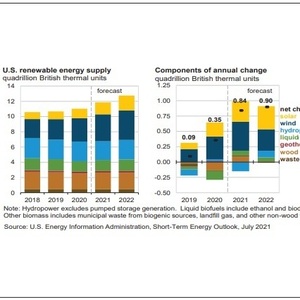EIA updates 2021, 2022 bioenergy forecasts




July 7, 2021
BY Erin Krueger
Advertisement
Advertisement
Related Stories
ENplus is celebrating its 15th anniversary. Since 2010, ENplus has played a defining role in shaping a reliable and transparent pellet market, ensuring that consumers and businesses can trust the quality of every certified pellet they use.
The American Biogas Council announced on Oct. 23 that attendance at its annual Business of Biogas 2025 conference drew an unprecedented number of executives, investors, and industry leaders committed to advancing the biogas economy.
New Brunswick’s Belledune Generating Station is testing advanced wood pellets to lower emissions and extend its operating life.




